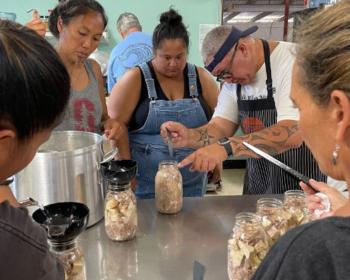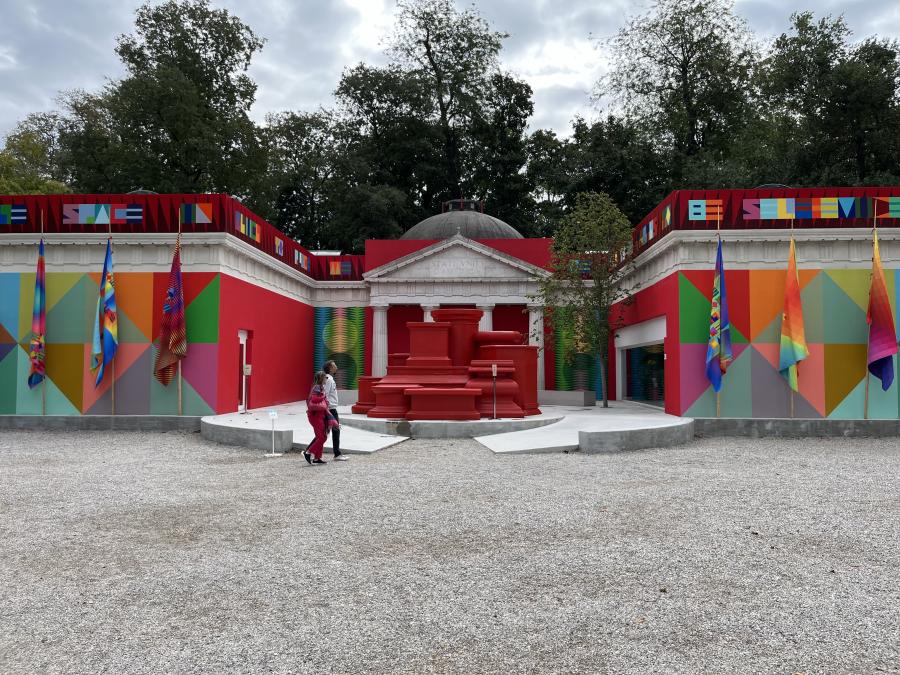
By Kate Kupidonova
After many years of collaborating with and supporting Indigenous artists, Cultural Survival is proud to announce its first Summer Indigenous Artisan Institute that will take place on July 24-July 28, 2017 in the Greater Boston area, thanks to the Paul and Edith Babson Foundation. Conveniently held between two summer Bazaars, this event is a unique opportunity for the Bazaar artists to showcase their skills and mastery and expand their network. The Institute will consist of professional development workshops, trainings, visits to local fair trade businesses, and cultural exchanges with other participants and with local Indigenous communities. An invigorating atmosphere of artistic generosity and spirit promises to make the event a rewarding experience and a true celebration of Indigenous arts.
Cultural Survival’s Bazaars were the cherished brainchild of Pia Maybury-Lewis, Cultural Survival’s co-founder. Having lived among the Xerente and Xavante Peoples in Brazil with her husband, anthropologist David Maybury-Lewis, Pia understood the importance of supporting Indigenous Peoples’ cultures, rights, and self-determination. Pia and David promoted Cultural Survival’s mission with dedication, deep compassion and genuine care for the people with whom they worked.
The first Cultural Survival Bazaar was held in 1975 after Pia and Chris Walter, owner of Yayla Tribal Rugs, organized a small fair on the top floor of a house near the Harvard University campus. Pia shared her memories about that day and the inspiration that sprang from it: “This opened up the idea of selling arts and crafts of Indigenous People and spearheaded the Fair Trade movement. Through this, I wanted to put Cultural Survival on the map, like the Red Sox [for Boston]!..” Over the years, the Bazaars grew and became more successful as the general public developed interest in Indigenous arts and more Indigenous artists looked for a marketplace in the Boston area to sell their craft. The renowned annual December Bazaar which usually took place at Harvard Law School’s Pound Hall from 1978 until 2005, attracted thousands of locals who appreciated the cultural diversity and fine craftsmanship of Indigenous artists from all over the world.

This year’s first Summer Indigenous Artisan Institute welcomes four participants: Ganna Nepyivoda, Akhtar Mir, Amalia Palomino, and Ujjwal Shrestha. All returning vendors, these artists’ presence and their art enriches the Bazaars and amplifies Indigenous voices. Their knowledge and expertise are a valuable contribution to the Institute program, which will be not only an opportunity for participants to learn from trainers but also have an exchange of knowledge and skills among participants themselves.
Akhtar Mir, a weaver from the Kashmir Valley, India, represents a network of craftswomen and men working collaboratively under the name of Afra Kashmir. Together, they create unique ornamented shawls and scarves. The Kashmir Valley’s beauty is reflected in its exquisite embroidery and refined designs. Mir explains, “Making a single shawl goes through many processes with many families. Families are involved in Pashmina goat farming, fiber collection and spinning, weaving, dyeing, design stamping, hand embroidery, and washing. There are different kinds of embroideries like needlework, hook work, and kani work. Shawl embroidery takes months to years to finish a single piece depending on the intricacy of the design and craftsmanship. There is a kind of embroidery which we call durukha (reversible), which makes a shawl usable on either side. This is considered the best craftsmanship.” Mir emphasizes that along with selling the crafts to sustain livelihoods of many working families, Afra Kashmir strives to educate buyers about the importance of purchasing original products and staying away from imitations. By ensuring that authentic crafts are recognized and appreciated, the Kashmir people will continue the centuries-old traditions of weaving the luxurious pashmina shawls.
Ganna Nepyivoda represents the culture of the Hutsuls, an ethno-cultural group of Ukrainian highlanders. The Hutsuls are known to inhabit the Carpathian mountains from time immemorial and people associate them with the sophisticated craftsmanship of carpet weaving, embroidery, and colorful egg decorating. Nepyivoda is one of few artists who relentlessly works to maintain the ancestral art that is under threat. Nepyivoda shares, “Unfortunately, now once-widely spread Hutsul crafts are degenerating under the pressure of cheap mass production. The danger of erosion of authentic designs and coloration is serious. Further evolution of this tradition through its new interpretations is one of the pillars for the tradition’s survival.” Pysankas, or painted eggs, have become the Bazaars’ favorites. The Hutsul legend says that the world’s fate depends upon the pysanka and only maintaining the tradition will ensure that the world will exist. Each village in the Carpathians had its own pysanka patterns, symbols, meanings, and rituals for decorating eggs, which were passed down from mother to daughter for generations. By the 1980s, however, the art of the pysanka had nearly been lost. Ganna responded by researching and reconstructing these traditions, learning how to write on eggs with melted beeswax. She considers the task of raising awareness about these ancient traditions her duty. As a professor at the M. Boichuk Institute of Decorative and Applied Arts in Kiev, she shares her knowledge with students and offers free master classes to anyone in the community who would like to learn about the art of pysanka.
Amalia Palomino Jimenez produces unique pieces of wooden box art, or retablos, that present scenes of daily life of people of the Peruvian Andes. Jimenez comes from Ayacucho, Peru, a city famous for its churches that represent each year of Jesus’ life. Jimenez’s grandfather mastered his skills by crafting and repairing retablos for the churches in the community. The traditions have been passed down through the generations and the whole family has been involved in designing ideas, mixing the colors and creating each item by hand. Retablos always tell a story and vary in their shapes, sizes and levels of complexity. Retablos include figures of saints whom families venerate and pray to for protection of their livestock, for abundant crops, or defense against damage caused by nature. Jimenez says that the retablos she creates show both traditional and non-traditional Andean festivals and activities happening in the communities today: “We make ornaments featuring traditional festivals, the Andean Cosmovision, and the daily activities of the people of the Andes.”
Ujjwal Shrestha represents Crafted in Kathmandu (CIK) Cooperative, a social enterprise concerned with preserving and restoring the historical World Heritage City of Kathmandu with its artists and crafters. Shrestha inherited paper craft skills from his family and began professionally making handmade paper goods as a young boy. One of his most mastered craft items became papier-mâché masks that are made from clay, glue, paper, and sometimes fabric. The masks are an old tradition originating in the 15th century when the Malla Dynasty ruled Nepal. The mask dancing was a way to culturally and economically involve people in agricultural activities in the Kathmandu Valley that quickly became a yearly celebration. Shrestha says that after 1951 when Nepal became a touristic destination the traditional crafts began to decline and families soon began to pursue different fields. However, Shrestha’s family stayed as one of few artisans who continued crafting because it was their vocation.
Cultural Survival is thrilled about this chance to enhance visiting artists' experiences at the Bazaars by offering extra opportunities for professional development, cultural exchange with each other and local Indigenous communities, and generally offering an exciting package of experiences. We look forward to learning along with the artists during this pilot year and hope to build on this Institute in future Bazaar seasons.


